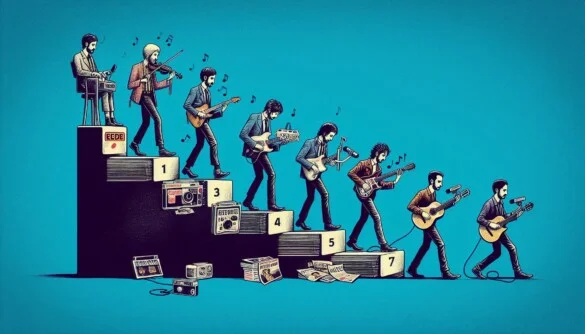Introduction
Enter the uncharted world of Subamerica—your carefully crafted oasis where alternative music, underground musicians, punk culture, alternative media, and indie video meet with raw honesty. Here, boundaries don’t so much twist as shatter. Welcome to the world of experimental music, a living borderland where sonic experimentation is the guiding force, pushing against conventions, defying structure, and reshaping what it means to create sound.
Experimental Music: What It Is & How It Works
Experimental music breaks the rules. It’s not about glossy production or reaching commercial benchmarks—it’s about manipulating sound as texture, abstraction, and feeling. Consider unusual instruments, discovered sounds, ambient noise, glitch electronics, and improvisational forms that develop organically.
At Subamerica, experimental artists succeed by:
- Practicing Sonic Alchemy: Musicians experiment with distortion, field recordings, modular synth loops, or purpose-built instruments to create unusual sonic textures.
- Defying Genre Designations: Tracks may wander between dissonance and melody, silence and noise, breaking boundaries between noise, drone, folk, and ambient.
- Prioritizing Process over Product: Experimenting musicians frequently embrace accidental faults, spontaneous improvisations, and brutal cuts as artistic expressions.
- Taking advantage of DIY Ethos: Recording in unusual locations—cellars, warehouses, public streets, or bedroom studios—brings atmosphere and authenticity.
- Encouraging Audience Exploration: Subamerica listeners are not passive—rather, they’re explorers, willing to uncover noise, detail, and the undefined.
5 FAQs
1. How does experimental music differ from mainstream music?
Mainstream music generally prefers formal song structures, repeating hooks, and slick production. Experimental music, however, invites surprise texture, free-form construction, noise components, and sonic detail—focusing on exploration rather than accessibility.
2. Is experimental music still “musical”?
Absolutely! Its musicality tends to reside in unconventional timbres, extended techniques (such as prepared instruments or electronics), and emotional resonance. It encourages listeners to explore sound in new dimensions—beyond melody, into texture and atmosphere.
3. How do artists make experimental tracks on Subamerica?
They may incorporate field recordings, distort feedback loops, alter analog synth patches, or record field recording layers. A lot of them welcome improvisation, recording spontaneous takes and allowing those spontaneous energies to influence the music.
4. Who listens to experimental music on Subamerica?
Those who need authenticity, innovation, and surprise—those who enjoy being challenged and amazed. Subamerica’s audience adores artists who break limits and welcome sonic experimentation with open hearts.
5. Ways fans can assist experimental artists here?
Fans may delve into Subamerica’s indie streaming catalog, listen virtually or physically, post works on social media, or contribute directly—financing art that experiments, stirs, and resonates.
Conclusion
In the core of Subamerica, experimental music is not merely heard—it’s experienced. It’s a celebration of the unknown, the raw, the unfiltered. Here, every static crackle, electronic pulse, and random loop is a testament to free creativity.
If you’re a musician pushing sound into new realms or a music lover starved for sonic revelations, your adventure begins here. Enter your music to Subamerica—become part of a collective that amplifies the unclassifiable and celebrates the boundary-pushing beat.

